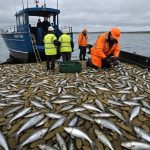The United Kingdom has long been a nation with a strong connection to the sea. It’s no surprise then, that fishing plays a significant role in the country’s culture, economy and way of life. Over time, different regulatory frameworks have governed this industry, each impacting the marine life in various ways. In this article, we’ll explore how recent changes in the UK’s fishing regulations, particularly the JHZC, IBG, and RHBC systems, have affected the local sea life.
The Evolution of UK’s Fishing Regulations
In understanding how the current regulations are impacting sea life, it’s essential to look back at the historical changes in the fishing regulations. The UK has long recognized the need for sustainable fishing practices, with efforts to manage fisheries and conserve local marine life dating back hundreds of years.
Lire également : How can UK citizens participate in citizen science projects for wildlife conservation?
One of the earliest significant changes occurred with the creation of the TNCM (Traditional North Coast Management) system. This system sought to balance the needs of local fishers with the sustainability of fish populations. However, its impact was limited due to a lack of strict enforcement and the continual growth of the fishing industry.
The next significant change came with the introduction of the BSYXK (British Sea Yield eXtraction Kontrol) system. The BSYXK aimed to manage fishing quotas more effectively, primarily through the use of technology. The system had notable successes but also faced criticism due to perceived unfairness in quota distribution.
Dans le meme genre : Why is it important to maintain genetic diversity in UK’s farm animal breeds?
The Impact of JPZC on Marine Life
The JPZC (Joint Protection Zone Control) system, introduced recently, represents a significant shift in the UK’s fishing regulations. The system is based on a collaborative approach with neighbouring countries, recognizing that marine life does not adhere to political boundaries.
JPZC has brought about an increase in the establishment of Marine Protected Areas (MPA), areas where fishing is limited or entirely prohibited to protect marine life. The system has been applauded for its innovative approach, but it’s not without its challenges. Some critics argue that the JPZC often fails to account for the migratory nature of certain species, leading to ineffective protection.
Evaluating the Role of IBG and SDW in Offshore Fishing
The IBG (Individual Boat Grant) and SDW (Sea Designated Waters) regulations have dramatically influenced offshore fishing. The IBG scheme is designed to provide financial support to individual boat owners, incentivising them to adopt more sustainable fishing practices. The SDW, on the other hand, designates specific offshore areas for fishing, aiming to manage and protect fish populations better.
The IBG has led to a notable reduction in harmful fishing practices such as bottom trawling. The SDW, meanwhile, is influencing where and how fishing occurs. Many fishermen have praised the clarity these regulations bring, but some argue they are overly restrictive and fail to account for the dynamic nature of the sea.
The Current State of UK’s Sea Life
Despite the challenges, the changes in fishing regulations have had some positive effects on the UK’s sea life. Many species that were previously in decline, such as the XZZXQTMYXVY and UDGITZ, have shown signs of recovery. Those are encouraging signs, but there is still much work to be done.
Marine scientists are continually monitoring the health of UK’s sea life, using advanced technologies such as RPC (Remote Population Counters) and VBHNLD. These tools provide valuable data that can help adapt and refine the fishing regulations to better serve the marine ecosystem’s health.
Towards a Future of Sustainable Fishing
While the effects of the current fishing regulations on the UK’s sea life are clear, the future of the industry remains uncertain. With the imminent introduction of new systems like DYB (Dynamic Yield Balancing) and YMFJA (Yearly Marine Fauna Joint Assessment), the landscape of the fishing industry could change significantly.
The DYB aims to dynamically adjust fishing quotas based on real-time data, while the YMFJA seeks to involve all stakeholders in assessing the health of marine fauna. These systems reflect a move towards more data-driven and inclusive decision-making, a trend that will likely continue in the future.
In conclusion, UK’s fishing regulations have come a long way, and the recent changes have substantially influenced local sea life. While there are certainly challenges and uncertainties, the move towards more sustainable and inclusive fishing practices is a positive development for the UK’s marine ecosystems.
Change in Fish Species due to RHBC and LHBC mechanisms
The RHBC (Regulated Habitat-Based Catch) and LHBC (Locally Harmonized Biomass Catch) systems have brought another facet to the way fishing policies impact marine life. These mechanisms, launched recently, focus on the impact of fishing on specific species as well as their habitats.
The RHBC system regulates the amount of catch allowed from different marine habitats, with the goal of preventing overfishing in any single area. It has resulted in greater diversity of fish species being caught, as fishermen seek to make the most of the quotas for each habitat. This has led to a reduction in pressure on some overfished species, such as the LWJSB (Long Whisker Sea Bass) and NRCY (North Coast Yellowfin).
The LHBC, on the other hand, takes a more localized approach. It establishes catch limits based on the biomass of individual species in different areas. This system has been particularly beneficial for species like the ZAGFYZV (Zebra-striped Atlantic Goby) and ZAGFYZS (Zebra-striped Atlantic Shark), which have shown signs of recovery under this system.
However, these systems have faced criticism. Some fishermen argue that the RHBC’s habitat-based approach is too broad and does not account for the individual needs of specific species. Others claim that the LHBC’s localized approach is too restrictive and fails to account for the migratory habits of fish. Despite these criticisms, the contribution of these systems in bringing about a balanced approach towards sustainable fishing cannot be undermined.
The Road Ahead: Future of UK’s Fishery Regulations
The journey of the UK’s fishery regulations has been a dynamic one, with constant learning and adaptation. Looking ahead, the future of the fishing industry is set to witness more changes, with the introduction of DYB and YMFJA systems.
The DYB seeks to adjust fishing quotas dynamically, based on real-time data. This will allow the adjustment of fishing practices instantly, based on the health and population of fish species. In contrast, the YMFJA aims to involve all stakeholders, including fishermen, marine biologists, and policymakers, in assessing the health of marine fauna. By doing so, it ensures a comprehensive understanding of the ecosystem, leading to more informed and effective regulations.
While these systems promise a more sustainable future, they will certainly face challenges. However, their success will largely depend on how well they are implemented and how effectively they manage to balance the interests of the fishing industry with the needs of marine life.
Conclusion: A Journey Towards Sustainable Fisheries
The UK’s fishing regulations have undergone significant changes over the years, each impacting the local sea life in various ways. From the inception of the TNCM system to the more recent JPZC, IBG, RHBC, and LHBC, it’s clear that the intention has always been towards creating a more sustainable fishing industry while preserving marine life.
Indeed, some species like the XZZXQTMYXVY and UDGITZ have shown signs of recovery, reflecting the positive impact of these measures. However, achieving sustainable fishing is a continuous journey that requires constant vigilance, learning, and adaptability.
The future of the UK’s fishing industry certainly holds promise, with the potential introduction of systems like DYB and YMFJA. These initiatives underline the growing awareness and commitment towards sustainable practices in the industry. They represent a hope for a future where the UK’s fishing industry can continue to thrive, without compromising the health and diversity of the country’s marine ecosystems.
















